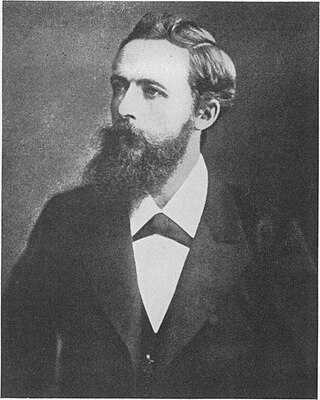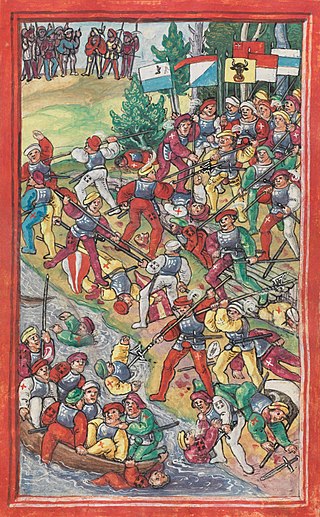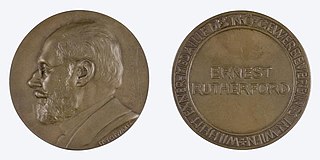You can help expand this article with text translated from the corresponding article in German. (November 2011)Click [show] for important translation instructions.
|
Willibald-Pirckheimer-Medaille was a Bavarian literary prize. [1]
You can help expand this article with text translated from the corresponding article in German. (November 2011)Click [show] for important translation instructions.
|
Willibald-Pirckheimer-Medaille was a Bavarian literary prize. [1]

Albrecht Dürer, sometimes spelled in English as Durer, was a German painter, printmaker, and theorist of the German Renaissance. Born in Nuremberg, Dürer established his reputation and influence across Europe in his twenties due to his high-quality woodcut prints. He was in contact with the major Italian artists of his time, including Raphael, Giovanni Bellini, and Leonardo da Vinci, and from 1512 was patronized by Emperor Maximilian I.

Eichstätt is a town in the federal state of Bavaria, Germany, and capital of the district of Eichstätt. It is located on the Altmühl river and has a population of around 13,000. Eichstätt is also the seat of the Roman Catholic Diocese of Eichstätt.

Jan Mikulicz-Radecki was a German-Polish-Austrian surgeon who worked mainly in the German Empire. He was born on 16 May 1850 in Czerniowce in the Austrian Empire and died on 4 June 1905 in Breslau, German Empire. He was professor in Kraków, Breslau, and Königsberg. He was the inventor of new operating techniques and tools, and is one of the pioneers of antiseptics and aseptic techniques. In Poland he is regarded as one of the founders of the Kraków school of surgery.

The Swabian War of 1499 was the last major armed conflict between the Old Swiss Confederacy and the House of Habsburg. What had begun as a local conflict over the control of the Val Müstair and the Umbrail Pass in the Grisons soon got out of hand when both parties called upon their allies for help; the Habsburgs demanding the support of the Swabian League, while the Federation of the Three Leagues of the Grisons turning to the Swiss Eidgenossenschaft. Hostilities quickly spread from the Grisons through the Rhine valley to Lake Constance and even to the Sundgau in southern Alsace, the westernmost part of the Habsburg region of Further Austria.
Melchior Goldast von Haiminsfeld (Goldastus) was a Swiss jurist and an industrious though uncritical collector of documents relating to the medieval history and constitution of Germany and was the first to coin the term medieval. He was a Calvinist writer of note.

Willibald Pirckheimer was a German Renaissance lawyer, author and Renaissance humanist, a wealthy and prominent figure in Nuremberg in the 16th century, imperial counsellor and a member of the governing City Council for two periods. One of the most important cultural patrons of Germany in his own right, he was the closest friend of the artist Albrecht Dürer, who made a number of portraits of him, and a close friend of the great humanist and theologian Erasmus.
The highest award which is presented by the Max Planck Society for services to society is the Harnack Medal, first awarded in 1925. The Harnack Medal is named after the theologian Adolf von Harnack, who was the first president of the Kaiser Wilhelm Society, the predecessor organization of the MPG, from 1911 to 1930. The medal has only been awarded 33 times since 1924, including 10 times by the Kaiser Wilhelm Society (1924–1936) and 23 times by the Max Planck Society (1953–2017).

Caritas Pirckheimer was Abbess of Saint Clara's convent in Nuremberg at the time of the Reformation, which she opposed due to the threat posed by Martin Luther to Catholic houses of worship and religious buildings, including her own convent.

The Definitions is a dictionary of 184 philosophical terms sometimes included in the corpus of Plato's works. Plato is generally not regarded as the editor of all of Definitions. Some ancient scholars attributed Definitions to Speusippus.

The Imhoff, Imhof or Im Hof family is a noble patrician family that belonged to the wealthy trading dynasties and ruling oligarchy in the Free Imperial City of Nuremberg during its Golden Age in the Renaissance. The Imhoff Trading Company was one of the most important European traders between the 15th and 17th centuries. It maintained branches and trade connections throughout Europe and financed European courts with loans.
Immermann-Preis was a literary prize of Germany.

The Large Triumphal Carriage or Great Triumphal Car is a large 16th-century woodcut print by Albrecht Dürer, commissioned by the Holy Roman Emperor Maximilian I. The work was originally intended to be the central part of a 54 metres (177 ft) long print of a Triumphal Procession or Triumph of Maximilian, depicting Maximilian and his court entourage in a procession. This section shows the emperor in his triumphal car, and was part of a tradition depicting imaginary "triumphs" or real processions, such as royal entries.
A Lehnsmann or Lehnsnehmer was a nobleman in the Middle Ages in German-speaking countries, who, as a liegeman was obliged to render service, goods in kind and loyalty to another nobleman, his liege lord (Lehnsherr), in return for which he was rewarded either by a grant of land, which included the population living within it, or by receiving an office. A distinction was made between the gift and the inheritable fee.

Steckelberg Castle is a ruined hill castle near Ramholz, in the borough of the East Hessian town of Schlüchtern in Germany.

The Wilhelm Exner Medal has been awarded by the Austrian Industry Association, Österreichischer Gewerbeverein (ÖGV), for excellence in research and science since 1921.

Agnes Dürer née Frey (1475–1539) was the wife of the German artist Albrecht Dürer. During their marriage, which was childless, she was portrayed several times by Dürer.
Corine Schleif is a professor and art historian who researches, teaches and writes about Medieval art, Renaissance art, feminist art theory, and the motivations behind the creating and destroying of art. She is faculty at Arizona State University's School of Art.

Willibald Imhoff was an art collector of the famous Nuremberg Imhoff family, and the grandson of Willibald Pirckheimer. He was a wealthy partner in the Imhoff trading company. In his youth, Imhoff stayed in his family's trading offices in Lyon and Antwerp to learn wholesale and long-distance trade. In 1540-42 he traveled to France and then in 1544 to Spain. In 1545 he married Anna Harsdörffer (1528-1601), daughter of Wolff Harsdörffer and Ehrentraud Welser. Even after that he regularly made trips to Lyon and Zaragoza as a partner of the trading company.